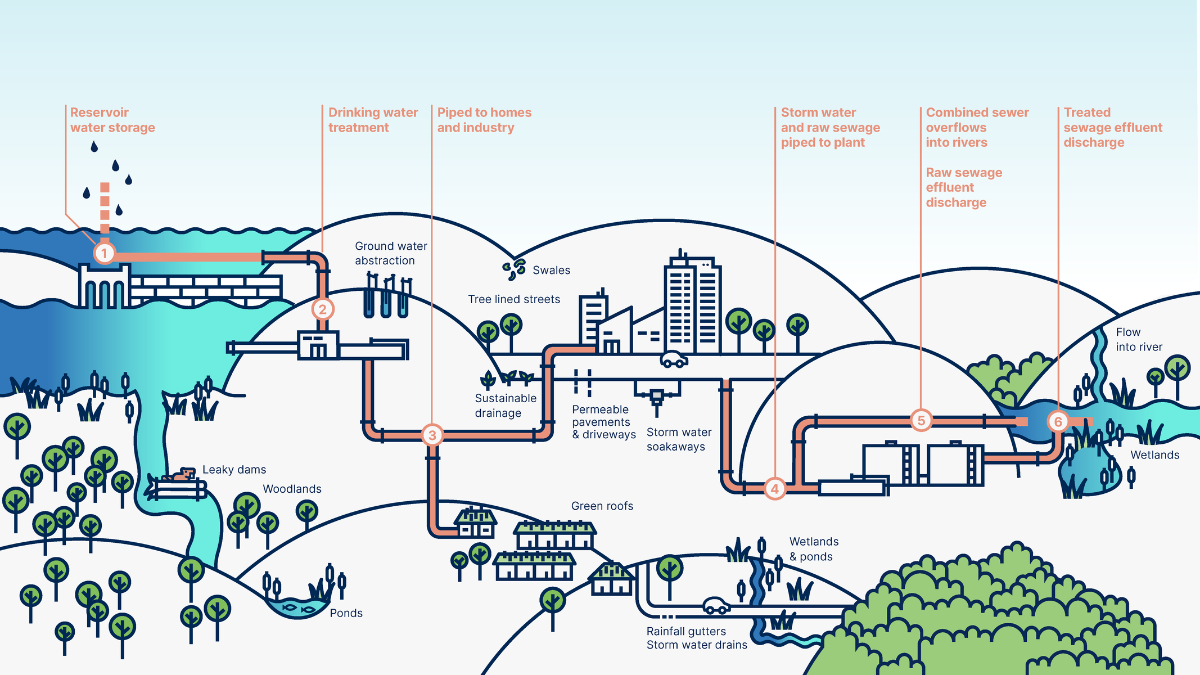World Habitat Day 2022
Since the dawn of human civilisation, rivers have played an important role in our development. Historically, they served as a lifeline which connected settlements and enabled trade. While this role has diminished, they are still the heart of many cities. They provide a central, natural space where people can relax and unwind.
When rivers are unhealthy, however, problems arise.
03/10/22
We know all too well that rivers are suffering a slew of health issues. For people without an active interest in rivers, it’s easy to turn a blind eye to things like sewage pollution and plastic litter. However, there are times when we are forcefully reminded of just how important rivers are. When they burst their banks and flooding occurs, river health becomes hard to ignore.
Flooding is an important part of nature. We will never be able to stop it entirely, nor should we seek to. Flooding can replenish wetlands with water, redistribute nutrients to the soil, and build fertile floodplains. However, we have altered the natural state of our rivers so completely that flooding is much more frequent and severe than it should be. To add to this, climate change means extreme rainfall events will become more frequent—and consequent increases in flooding are inevitable.
When we straighten rivers and remove their meanders, we accelerate the passage of floodwater; when we remove floodplains and wetlands, rivers cannot accommodate the excess water; and when we strip rivers of their natural woody debris, we remove the mechanism by which surging water naturally slows.
However, when flooding inevitably occurs, we blame the river—ignoring the root cause. In many cases, floods prompt further modification of our rivers. Rather than seeking to remove water from our towns entirely, we actually need to Build Back Wetter. Water is the foundation of life on earth, and we need to build it back into our rural landscapes, towns and cities. Take a look at the diagram below to see how this might work.

All of these measures help to hold water and slowly release it over time. Not only would this combat flooding; it would also help us to weather out periods of drought. By nurturing spongier, wetter landscapes, heavy periods of rain over winter can help to alleviate the stress of hot, dry summers. Moreover, these features also help to attenuate pollutants and enhance biodiversity.
This year, World Habitat Day focuses on the challenges our settlements are facing as a result of the three Cs: coronavirus, climate change and conflict. When it comes to climate change, rivers are the canary in the coalmine. They are sensitive to a changing climate, and we see vivid evidence of this in drought and in flood. We must not only listen to what rivers are telling us, but take action based on this.
The AA-FLOODS project adopts a holistic approach to managing flood risk, driving a collaborative approach across national and regional Governments, Local Authorities and water companies but local communities too, empowering civil society to play its role. As a project partner, The Rivers Trust leads on the implementation of nature-based solutions in both rural and urban environments, throughout the whole river catchment. These features are fundamental to us building back wetter, holding water back and reducing flood risk downstream. Moreover, they will help us to build climate resilience as we experience more frequent and intense flooding over the coming years.